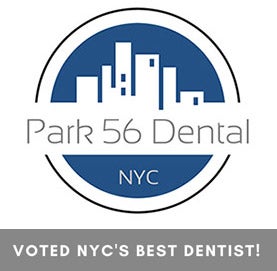-
Teeth Whitening Aftercare

Getting your teeth whitened is so rewarding! Once you’ve had a teeth-whitening procedure done, you’ll probably be flashing your beautiful new smile at everyone you see. If you want to keep it beautiful and white, though, you’ll need to take care of your smile. Here are some tips to keep your teeth bright and shining for as long as possible.
- Be mindful of colored food and beverages. Especially during the first 48 hours after your teeth-whitening procedure, avoid eating or drinking anything that’s deeply colored. Wine, tea, coffee, cherries, chocolate, beets, berries, soda, juice, and dark sauces should be avoided in favor of foods that are light in color. You’ll also want to avoid chewy foods for a while because they can leave a stain. If you do decide to drink a colored beverage, use a straw to avoid staining your teeth.
- Don’t eat acidic foods. Soda, pickles, and citrus, for instance, can be damaging after teeth whitening. Teeth-whitening treatments weaken the tubules of tooth enamel, opening them up. This makes your teeth more prone to stains and decay, and acidic foods worsen this weakness.
- Eat foods that will help your teeth stay white. White meat, bananas, cauliflower, potatoes, white beans, rice, white rice, and pita bread are all good foods post-whitening. Certain foods can even help clean your teeth, helping them to stay white. Crunchy fruits or vegetables, especially apples, celery, carrots, and green beans, can enhance saliva production, which cleans the teeth and counteracts acids. These crunchy vegetables can even remove temporary stains. Eating more dairy products and foods high in calcium will help keep your teeth healthy and defend against decay.
- Take care of sensitive teeth. After the whitening procedure, your teeth may be sensitive. Avoid foods that are too hot or too cold, and use dental hygiene products designed specifically for sensitive teeth.
- Don’t overdo it when you’re caring for your teeth. Brush after every meal, or when you’ve eaten a staining or acidic food. Do it gently, to avoid causing yourself pain or stripping the whitening. Floss at least once a day to prevent tooth decay and gum disease. Don’t immediately do any more whitening, even if you aren’t satisfied with the whiteness of your teeth, because that can harm your enamel.
- Don’t smoke! Smoking can stain your teeth, causing yellow and brown discoloration that’s extremely difficult to remove. What’s more smoking is terrible for your oral health, as well as your overall health. If you smoke, quit. If you don’t smoke, never start.
At Park 56 Dental Group, we offer teeth whitening, along with pediatric, prosthodontics, endodontics, oral surgery, Invisalign®, emergency, and sedation dentistry, all at the highest level of treatment. We serve the Midtown, Central Park, Upper East Side, Park Avenue, and all surrounding Manhattan and New York areas, with a patient-centered practice that has hours to fit your schedule. Schedule your complimentary consultation today by contacting us online or calling us at (212) 826-2322.
-
The Benefits of Straighter Teeth
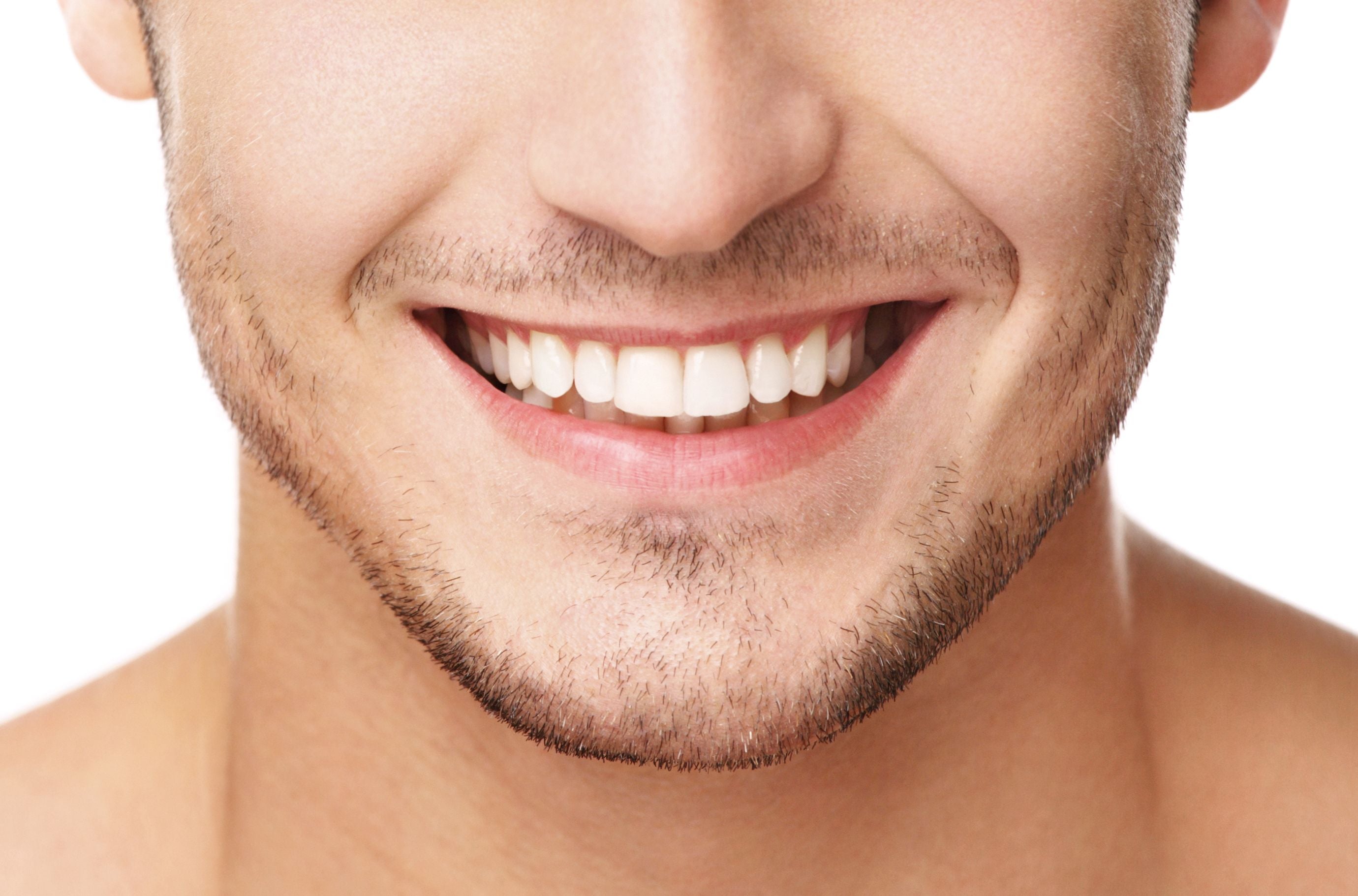
If you’re thinking of having your teeth straightened, you’re probably thinking about the cosmetic benefits. About a million adults in the U.S. wear braces, most of them because they want the look of perfectly straight teeth. Would it surprise you to learn that the benefits of straighter teeth go far beyond the way you look? Read on to learn more.
- Straight teeth are easier to clean. When your teeth are crooked or crowded, it can be hard to thoroughly clean them, getting between every space and crevice. This can lead to cavities, periodontal disease, and other oral health issues.
- Because they help you keep your mouth healthier, straight teeth are better for the overall health of your body. Cleaning your teeth removes bacteria, preventing infections from spreading throughout your body. Unhealthy mouths have been linked with a variety of health conditions like diabetes, heart disease, respiratory problems, and dementia.
- Straight teeth help your digestion. This is obvious if you think about it, because chewing is the first step of the digestion process. When you’re better able to chew your food, the rest of your digestive system doesn’t have to work as hard.
- You’ll speak more clearly with straighter teeth.Teeth that are crowded, gapped or protruding teeth can negatively impact your speech patterns. Lisps and other speech impediments are more likely with crooked teeth. When your teeth are straight, your speech will be clearer, boosting your self-confidence.
- Straight teeth last longer. They’re less likely to break, crack, or decay and fall out. When your teeth are straight, there’s less wear and tear placed on your teeth, gums, and jaw when you bite and chew. Improper alignment can prematurely wear teeth down, causing chipping and notching at the gum line, fractures in the teeth, and abnormal flattening of the biting surface.
- Neck, head, and jaw pain can be reduced when teeth are straightened. Crooked teeth can contribute to jaw misalignment, straining the joints of the jaw and leading to temporomandibular joint (TMJ) disorders, which can cause ear problems, dizziness, and chronic neck, face, and head pain.
- You’ll sleep better if your teeth are straighter. Crooked teeth can contribute to problems like sleep apnea and tooth grinding.
- Straight teeth can make you feel more confident. When your teeth are crooked or misaligned, it can make you feel insecure or unattractive. Havin them straightened can improve your self-esteem, which improves your mental and physical health. You’ll be less likely to feel depressed or anxious, and more likely to feel confident and sure of yourself.
At Park 56 Dental Group, we offer pediatric, prosthodontics, endodontics, oral surgery, Invisalign®, emergency, and sedation dentistry, all at the highest level of treatment. We serve the Midtown, Central Park, Upper East Side, Park Avenue, and all surrounding Manhattan and New York areas, with a patient-centered practice that has hours to fit your schedule. Schedule your complimentary consultation today by contacting us online or calling us at (212) 826-2322.
-
Smile Restoration Services

At Park 56 Dental, nothing is more important than our patients’ oral health. If you have missing, discolored, decayed, or crooked teeth, we can help! Learn about our smile restoration services to find a solution that works for you.
Dental Implants
Missing teeth are among the most noticeable oral health problems. When decay or a traumatic injury results in tooth loss, dental implants are often the best restorative option available. An implant features a screw-like titanium body, which takes the place of the missing root. Then, a tooth-colored crown is cemented on top of the implant. The result is a functional, natural-looking replacement tooth that can last decades with proper care.
Dental Bridges
As another option for treating tooth loss, dental bridges “bridge the gap” between two teeth without implanting anything into the gums. Bridges can be placed more quickly and cost less than implants, but they require healthy surrounding teeth to prevent the gums and jawbone from degrading. We can help you decide if implants or bridges are best for your tooth loss scenario.
Dental Veneers
Do you have chipped, misshapen, or stained teeth? With veneers, you no longer have to hide your smile! Veneers are thin, tooth-colored shells that adhere to the front of your natural teeth. They can be whatever shape, size, and color you want to achieve the desired aesthetic effect. Thanks to their durable porcelain construction, you can expect veneers to last many years with proper care.
Root Canals
If one of your teeth has a deep cavity or diseased nerve, it may be possible to save the tooth with a root canal treatment. While root canals have a reputation for being painful, the intent is to remove pain and swelling. Our dentists can complete this procedure in one to three office visits. By the end of your treatment, you’ll be ready to show off a healthy, pain-free smile!
Invisalign
Have you always wanted straighter teeth but balked at traditional metal braces? Invisalign is the answer! This treatment uses a series of clear, plastic aligners to straighten your smile over an average of nine to 15 months. Invisalign is comfortable, removable, and BPA-free for your safety. Best of all, the aligners are virtually invisible, so no one will even know you’re wearing them!
Zoom! Whitening
Many at-home products claim to whiten your teeth, but only in-office Zoom! whitening can give you the results you want in a single, one-hour visit. Remove years of staining and brighten your smile by an average of eight shades with this safe, simple, and relaxing process. Our dentist will ensure your teeth are healthy and eligible for whitening before treatment begins.
Are you ready to fall in love with your smile like never before? The dentists at Park 56 Dental have the skills and experience needed to perform restoration services for our New York City patients. If you are dissatisfied with your smile for any reason, please contact us at (212) 826-2322 and schedule a consultation today!
-
Questions to Ask During Your Next Dentist Visit
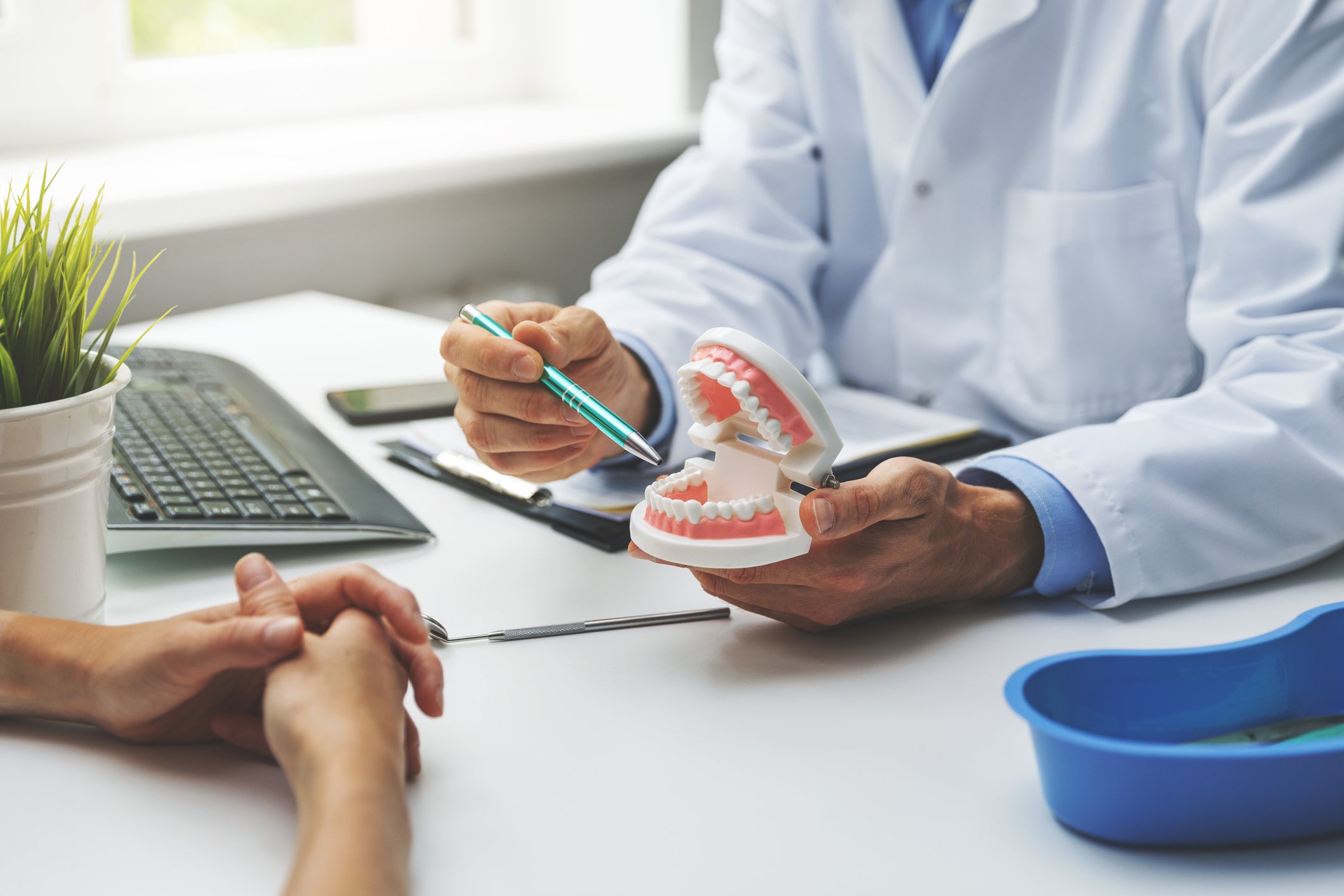
Dentists advise most patients to schedule an oral exam and cleaning twice a year. Each visit is your chance to learn more about your oral health and the treatments available to keep your smile healthy. Write down anything you want to ask during your next dentist visit. You may choose to ask some of the questions we’ve compiled here.
- Why do my teeth hurt? If you are experiencing toothaches or sensitivity, tell your dentist right away. Potential causes include tooth decay, cracked teeth, exposed roots, whitening products, orthodontic work, and fillings. Such problems aren’t always apparent during an exam, and your dentist can only recommend treatment if you speak up.
- Is whitening treatment right for me? Tooth whitening treats surface stains caused by coffee, tea, and other dark-colored foods and drinks. It does not address intrinsic discoloration, however. Your dentist can help you determine if whitening or another procedure, such as bonding or veneers, is most appropriate.
- How can I strengthen my teeth? If you’re worried about weak enamel or cavities, your dentist may recommend fluoride treatment. You can also improve the strength, appearance, and functionality of your smile with cosmetic bridges, fillings, or implants.
- What toothbrush, toothpaste, and floss should I use? With so many dental products out there, it never hurts to ask your dentist which ones they recommend. If you have weak enamel, sensitive teeth, gum recession, or other oral health concerns, you can receive advice specific to your situation.
- Should I use mouthwash? Brushing and flossing get plenty of attention, but your dentist may also recommend a therapeutic or prescription mouthwash to treat gingivitis, tooth sensitivity, inflammation, excessive gum bleeding, chronic staining, or other oral health concerns.
- Do you recommend wearing a mouthguard? Many people grind their teeth at night without knowing it. An observant dentist should recognize the signs of tooth grinding, also known as bruxism, even if you don’t ask about it. These signs may include receding gums, damaged enamel, popping jaw, and complaints of morning headaches. Your dentist can fit you with a custom mouthguard to ease your symptoms and protect your oral health.
- Could I be at risk for oral cancer? Tobacco use, heavy drinking, excessive sun exposure to the lips, and a weak immune system all increase your oral cancer risk. Early detection is critical for successful treatment, so request screenings often, even if you don’t think you have cancer.
- Why do I need dental X-rays? Most dentists recommend bitewing X-rays once a year and a full-mouth series every four to five years. X-rays reveal what’s happening beneath the surface, which is vital for diagnosing problems and pursuing the proper treatment.
Looking for personalized answers to these and other oral health questions? Please contact Park 56 Dental at (212) 826-2322 and schedule an appointment at our NYC dentist office today! Our knowledgeable team can address all of your concerns and help you make the best choices for your oral health.
-
New Year’s Resolutions for Better Oral Health

Welcome to the new year! Have you set any resolutions yet? Consider adding oral health to the list of things you want to improve in 2021. Here are the strategies that will help you achieve a brighter, healthier smile in the coming year.
Load Up on Fruits and Vegetables
Eating well is important for healthy teeth and gums. The vitamins, minerals, and antioxidants found in fruits and vegetables can help protect you against gum disease. Crisp, crunchy options such as apples, carrots, and celery also scrub your teeth to help fight plaque. Besides produce, other mouth-friendly foods include dairy, nuts, legumes, and tea.
Eat Less Sugar
While you’re loading your plate with fruits and vegetables, remember to lessen your sugar intake as well. This simple resolution can improve your health in many ways, including dramatically reducing the risk of tooth decay. The change can be simple—reach for sugar-free seltzer water instead of soda, and chew sugar-free gum instead of munching on candy.
Quit Smoking
Smoking is incredibly harmful to your oral health, increasing the risk of cavities, tooth discoloration, gum recession, gum disease, and oral cancer. Smokers are also twice as likely as non-smokers to experience tooth loss. It isn’t just smoking—tobacco use of any kind can be detrimental.
Brush Twice a Day
It’s easy to skip brushing, promising yourself that you’ll brush “extra well” the next day. However, going to bed with unbrushed teeth invites bacteria to eat away at your enamel and cause cavities to develop. It’s equally important to brush your teeth in the morning—not just to freshen your breath, but to eliminate acid and bacteria that build up overnight. Otherwise, a hard, tooth-staining substance called tartar is likely to form.
Commit to Flossing
Arguably more important than brushing, flossing removes plaque and debris from between your teeth and along the gum line that your toothbrush leaves behind. It also stimulates the gums to help prevent recession and gingivitis. If flossing once a day isn’t already a habit, implement it into your new oral health routine.
Visit the Dentist at Least Twice a Year
While all of these at-home tips help keep your smile bright between dentist visits, they can’t replace professional cleanings and dental exams. After all, only a dentist can remove plaque, scrape away tartar, and treat developing problems early before they threaten your long-term oral health.
Whiten Your Teeth
There’s no better time than the new year to brighten your smile! In-office Zoom! whitening lightens your teeth by an average of eight shades in a single, one-hour visit. The treatment is a safe, simple, and relaxing way to help you look and feel your best in 2021.
Park 56 Dental is proud to offer preventative, restorative, and cosmetic dentistry to improve the health and appearance of your smile. Visit our spa-like, patient-centered dentist office to receive the personalized, quality care you deserve. Contact us online or call (212) 826-2322 today to learn why we’ve been voted Top Dentist in NYC!
-
How pH Affects Your Teeth
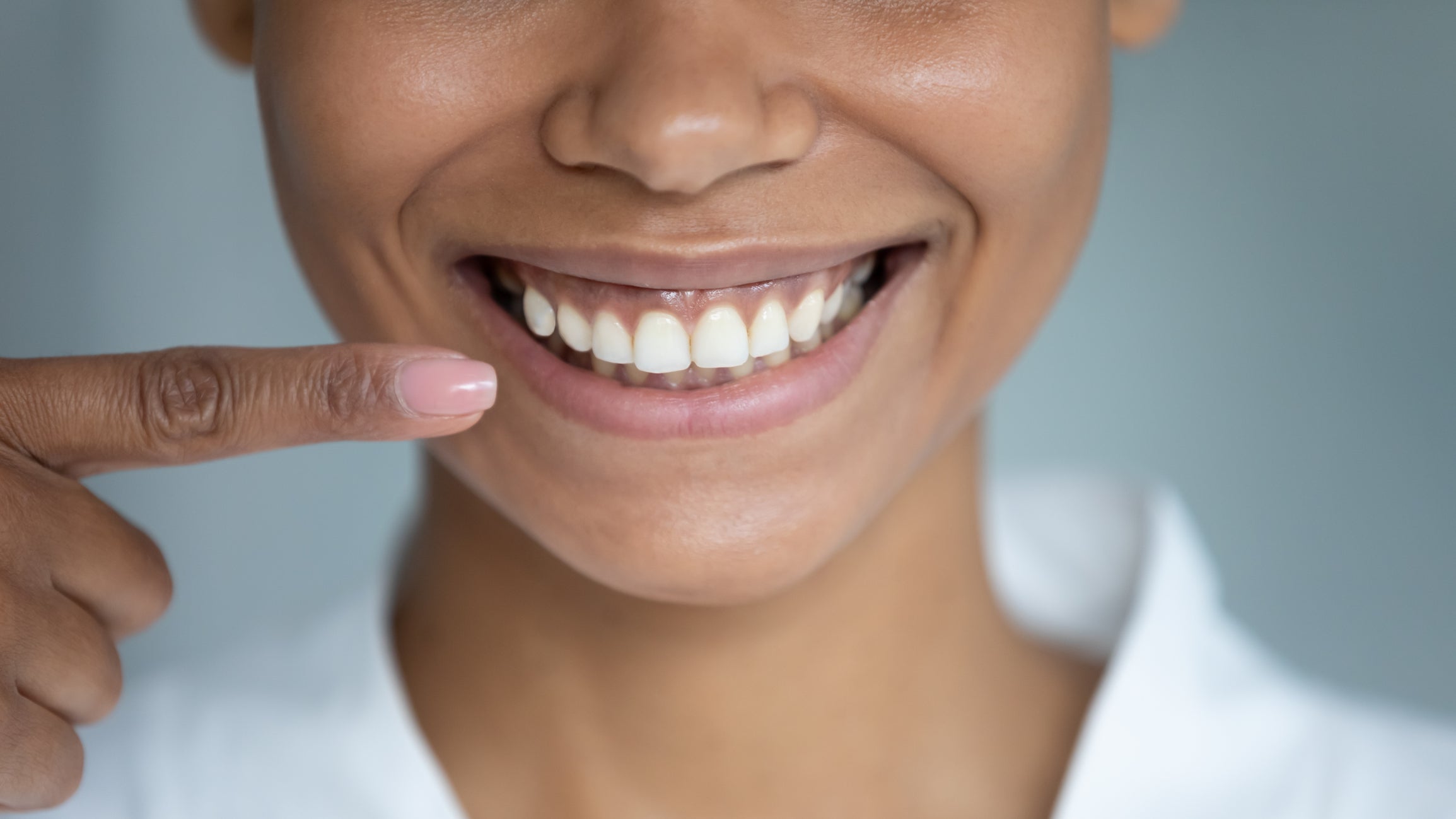
Your body’s pH level can affect your overall health. Lower (more acidic) pH levels increase the risk of type 2 diabetes, heart disease, and obesity. Conversely, higher (more alkaline) pH is linked to improved memory, reduced pain, and lower risk of stroke and hypertension.
Did you know that pH levels also affect your teeth? On the pH scale, anything above 7.0 is alkaline, while anything below 7.0 is acidic. The goal is to keep your mouth at 5.6 or higher. Consider the connection between pH and oral health, as well as how to balance pH levels in your mouth.
Oral Health Risks of an Acidic Mouth
Acidic foods and beverages lower your pH, which can negatively affect your oral health. Here’s what can happen if your mouth experiences long periods of low pH:
- Mineral loss: Acidic snacks deplete your teeth of minerals, leaving them more vulnerable to damage from harmful bacteria. Once the ideal pH of 5.6 is restored, minerals return to your teeth.
- Enamel erosion: Acid wears down enamel, the hard outer coating of your teeth that protects the more sensitive layers underneath. Enamel doesn’t grow back, so it’s vital to care for your teeth before this occurs.
- Tooth decay: Temporary mineral loss and permanent enamel erosion leave your teeth vulnerable to destructive bacteria. The resulting tooth decay and cavities may require restorative dentistry—including fillings, crowns, or root canals—to avoid tooth loss.
- Bad breath: If you struggle with bad breath, this could be a sign of unbalanced pH levels in the mouth.
- Sensitivity to hot and cold: Enamel loss can make your teeth more temperature-sensitive. Since acidity can cause enamel erosion, balancing your pH levels may help treat sensitive teeth.
How to Increase the Alkalinity of Your Mouth
If you want to stop bad bacteria from wreaking havoc in your mouth, create an environment that prevents mineral depletion and supports healthy enamel. Here are some ways to maintain a balanced pH level in your mouth:
- Adopt a more alkaline diet: This consists of eating more vegetables, beans, and seeds while limiting your intake of white bread, sweeteners, condiments, soda, fruit juice, sports drinks, alcohol, tea, and coffee.
- Limit snacks: Every time you eat or drink, your pH level fluctuates. Avoid consuming anything besides water between meals to help the pH remain stable.
- Chew sugar-free gum after meals: Gum chewing stimulates saliva flow, the key to neutralizing acids and protecting your oral health.
- Maintain good dental hygiene: Brush your teeth for two minutes twice a day and floss once a day. Remember to wait at least 30 minutes after eating to brush so your saliva has time to replenish tooth minerals. Schedule a professional dental cleaning twice a year as well.
If you have concerns about managing your pH levels, or it’s been more than six months since your last dental cleaning, contact Park 56 Dental at (212) 826-2322 to schedule a visit to our NYC dentist office.
-
How Restoring Your Smile Can Help with Your Mental Health

Good oral health affects your overall wellness in many ways. Straight teeth ensure a comfortable bite and help you chew thoroughly. Then, healthy gums can help stave off other complications, including stroke, diabetes, and heart disease. But have you ever considered how restoring your smile can improve your mental health? The psychological impacts of a beautiful smile can’t be ignored.
Greater Self-Confidence
If you feel self-conscious about crooked, chipped, or stained teeth, you may often cover your mouth with your hand or maintain a tight-lipped smile. Correcting any problems with your teeth and gums generates a wave of self-confidence. This encourages you to smile, laugh, and communicate without underlying anxiety about people looking at your teeth.
Decreased Risk of Depression
Researchers from Deakin University found a connection between depression and oral health. In short, if you’re experiencing problems with your teeth and gums, your chances of feeling depressed increase. As an inflammatory disorder, depression can be triggered by inflammation in the gums (or elsewhere in the body). This means, if you’re feeling down, you should take a closer look at your oral care routine. Enhancing your dental hygiene could improve your mental health.
Boosted Mood & Physical Health
Scientists and therapists agree—the simple act of smiling has undeniable emotional advantages. It has been demonstrated that flashing a smile releases dopamine, endorphins, and serotonin into the brain, which helps fight off stress and promote feelings of joy. These feel-good neurotransmitters even help lower your heart rate and blood pressure for improved physical health as well.
Better Appearance
A 2011 study found that both men and women are perceived as more attractive when they smile and make eye contact. You are more likely to interact in a friendly manner with those around you if you are confident with the appearance of your smile.
Longer Lifespan
Emotions affect your personality and life outcome by influencing the way you think, behave, and interact with others. People with more positive emotions are happier, have more stable relationships, and are more likely to live longer than people with overwhelmingly negative emotions. It stands to reason that happier people smile more and, as already stated, smiling makes you feel happier. A Wayne State University study from 2009 brings the point home by suggesting that people who smile more intensely tend to have longer lifespans.
Enhanced Ability to Spread Joy
If you have straight, white teeth that you want to show off to the world, you’ll be encouraged to smile more often. As they say, “Smile and the world smiles back.” This phrase comes from the notion that smiling is contagious. When you walk around with a smile on your face, it lifts not only your own mood but also the moods of those around you. This isn’t just common sense—it’s backed up by current research.
Ready to improve your mental health? Start by restoring your smile at Park 56 Dental! Call our NYC dentist at (212) 826-2322 or schedule your appointment online today.
-
How to Reduce Teeth Whitening Pain
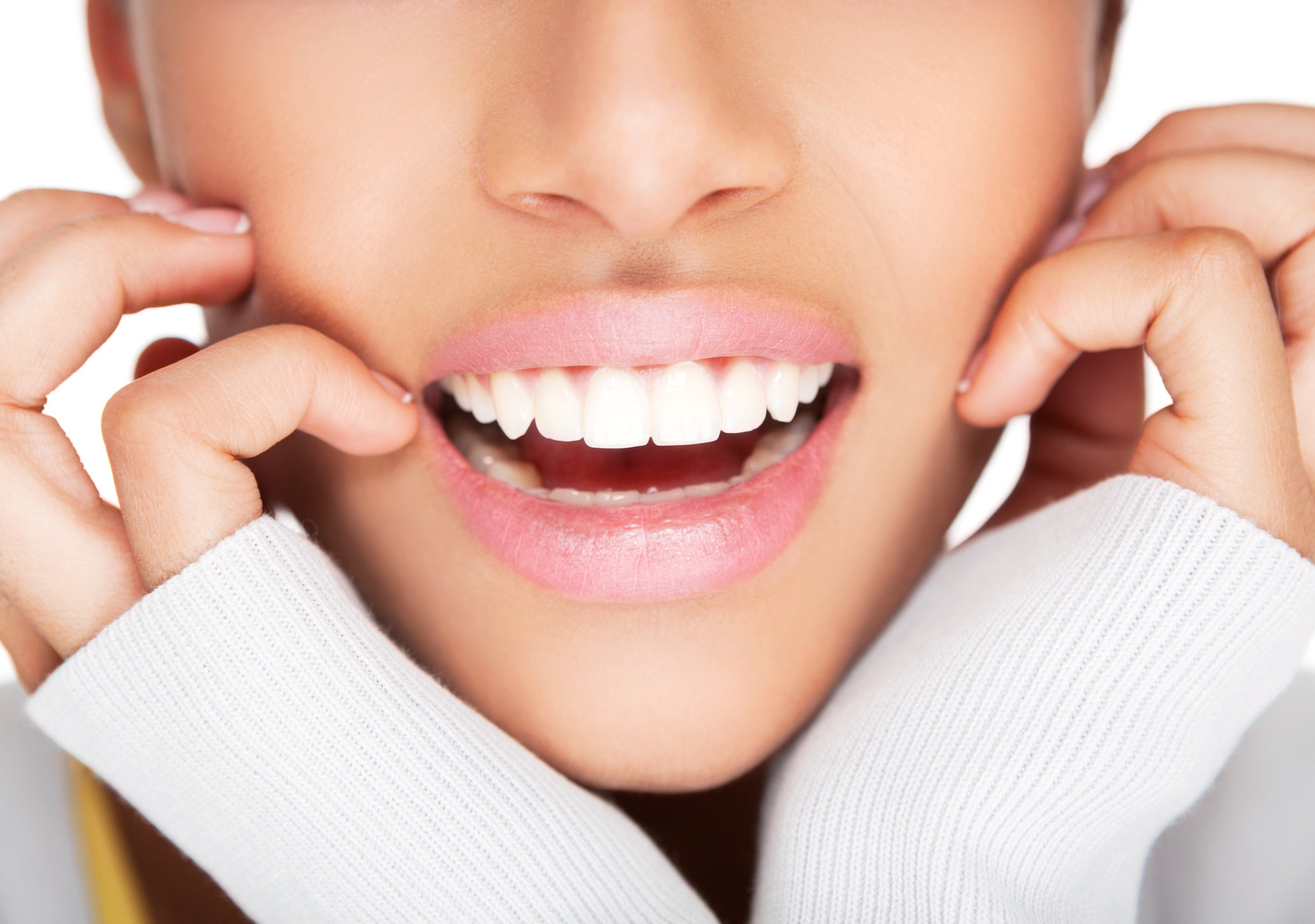
Whitening your teeth is a fast, easy way to improve the appearance of your smile. One common side effect is temporary pain and sensitivity to hot and cold drinks. We’re here to help you understand what causes teeth whitening pain and how you can prevent it.
Is Tooth Whitening Safe?
Zoom! whitening is a professional treatment that brightens your smile by an average of eight shades in a single, one-hour visit. While it’s championed as a simple, safe, and pain-free process, some patients still experience temporary hypersensitivity following treatment. If you’re concerned about this, speak with your dentist before having Zoom! whitening performed.
Why Do Teeth Sometimes Hurt After Whitening?
You are most likely to experience discomfort after whitening if you already have sensitive teeth. This is often caused by thin enamel or exposed roots. Both issues leave the underlying layer, known as dentin, vulnerable to the bleaching agent found in teeth whitening products. If the nerve endings here are irritated by the whitening process, you could be left with hypersensitivity for the next 24 to 48 hours.
How to Prevent Teeth Whitening Pain Before Treatment
- Switch to desensitizing toothpaste: One to two weeks prior to your treatment, brush with toothpaste containing 5 percent potassium nitrate to build up a resistance to sensitivity. This substance is known to reduce tooth pain, so it’s a common ingredient in desensitizing toothpaste. Brush before your treatment to clean and prepare the surface of your teeth for whitening.
- Take medicine: Immediately before your whitening appointment, take over-the-counter anti-inflammatory drugs as a proactive measure against tooth sensitivity.
- Apply ACP gel: Request relief ACP desensitizing gel from your dentist. If you have whitening trays at home, dispense a pea-sized amount into each impression and wear the tray for 30 minutes before heading to your professional Zoom! whitening treatment. If you don’t have whitening trays, apply the gel using a toothbrush.
How to Prevent Teeth Whitening Pain After Treatment
- Wait to brush: If you brush your teeth too soon after whitening, you will further expose the dentin, increasing sensitivity. Therefore, you should wait to brush for a couple of hours. When you do, brush extra gently. Use a soft-bristled toothbrush and lukewarm water to take some of the sting out of your sensitive teeth.
- Avoid hot and cold drinks: Hot coffee and ice-cold water could cause pain, so stick with room-temperature beverages for the next 24 to 48 hours. You may also find it helpful to drink through a straw so liquids bypass your teeth for the most part.
- Keep taking medicine and using ACP gel: If you continue to experience sensitivity despite your other efforts, take more anti-inflammatory drugs and reapply the ACP gel after each meal.
Park 56 Dental is proud to offer Zoom! whitening, the fast, easy way to whiten your smile. If you’re interested in scheduling treatment, or you have more questions about tooth sensitivity, please contact us online or by phone at (212) 826-2322.
-
15 Things That Cause Bad Breath

Do you suffer from bad breath, also known as halitosis? In a majority of cases, the odor stems from bacteria in your mouth. Everyone knows that eating onions and garlic can make your breath stink, but these are far from the only culprits. Learn what other things cause bad breath so you can avoid them.
- Citrus fruit: Odor-causing bacteria love acidic environments, so eating lots of citrus fruit invites bad breath to stick around.
- Pasta sauce: Tomatoes are acidic as well, meaning red pasta sauce can contribute to bad breath.
- High-protein diets: The body produces ammonia as a byproduct of breaking down protein. When the odor escapes from your mouth, it causes bad breath.
- High-sugar diets: Because of how sugar interacts with the bacteria in your mouth, eating too many sweets could result in sour breath.
- Peanut butter: Its sticky consistency makes peanut butter difficult for saliva to wash away. As it lingers, bacteria feed, making your breath stink for hours at a time.
- Canned fish: Fishy compounds tend to linger in the mouth, giving off an unsavory smell until you drink water, chew gum, or brush your teeth.
- Cheese: Most dairy products, including cheese, contain amino acids that react with bacteria in your mouth to produce excess hydrogen sulfide. The result is a mouth that smells like rotten eggs.
- Horseradish: Isothiocyanate is a sulfur-containing compound found in all cruciferous vegetables, including horseradish. Mint is the best way to combat the effects of this compound.
- Coffee: Your favorite morning beverage has a drying effect on the mouth, reducing saliva flow and allowing odor-causing bacteria to thrive.
- Alcohol: Excessive alcohol consumption causes dehydration, which can reduce saliva production. This creates a dry environment for foul-smelling bacteria to flourish.
- Tobacco: Smoking or chewing tobacco causes an unpleasant odor in the mouth. Smokers are also more likely to develop gum disease, another source of bad breath.
- Medications: Some prescriptions cause dry mouth, a known cause of halitosis. Other drugs break down in your body, releasing foul-smelling chemicals that can be carried on your breath.
- Infections: Gum disease, tooth decay, mouth sores, or surgical wounds may lead to infections that cause bad breath and an unpleasant taste in your mouth.
- Digestive issues: Chronic digestive distress, acid reflux, and bowel disorders can produce gases that cause halitosis. An inability to digest certain enzymes could also lead to bad breath.
- Poor dental hygiene: The best way to combat almost all sources of bad breath is to brush, floss, and rinse with mouthwash. By maintaining good oral health, you can combat halitosis before it starts.
If your bad breath just won’t go away, you may need help from a dentist to uncover the underlying cause. Please contact Park 56 Dental at (212) 826-2322 to work with one of the top dentists in New York. By providing a thorough dental cleaning, we can help you get rid of bad breath for good!
-
Everything You Need to Know About Sedation Dentistry
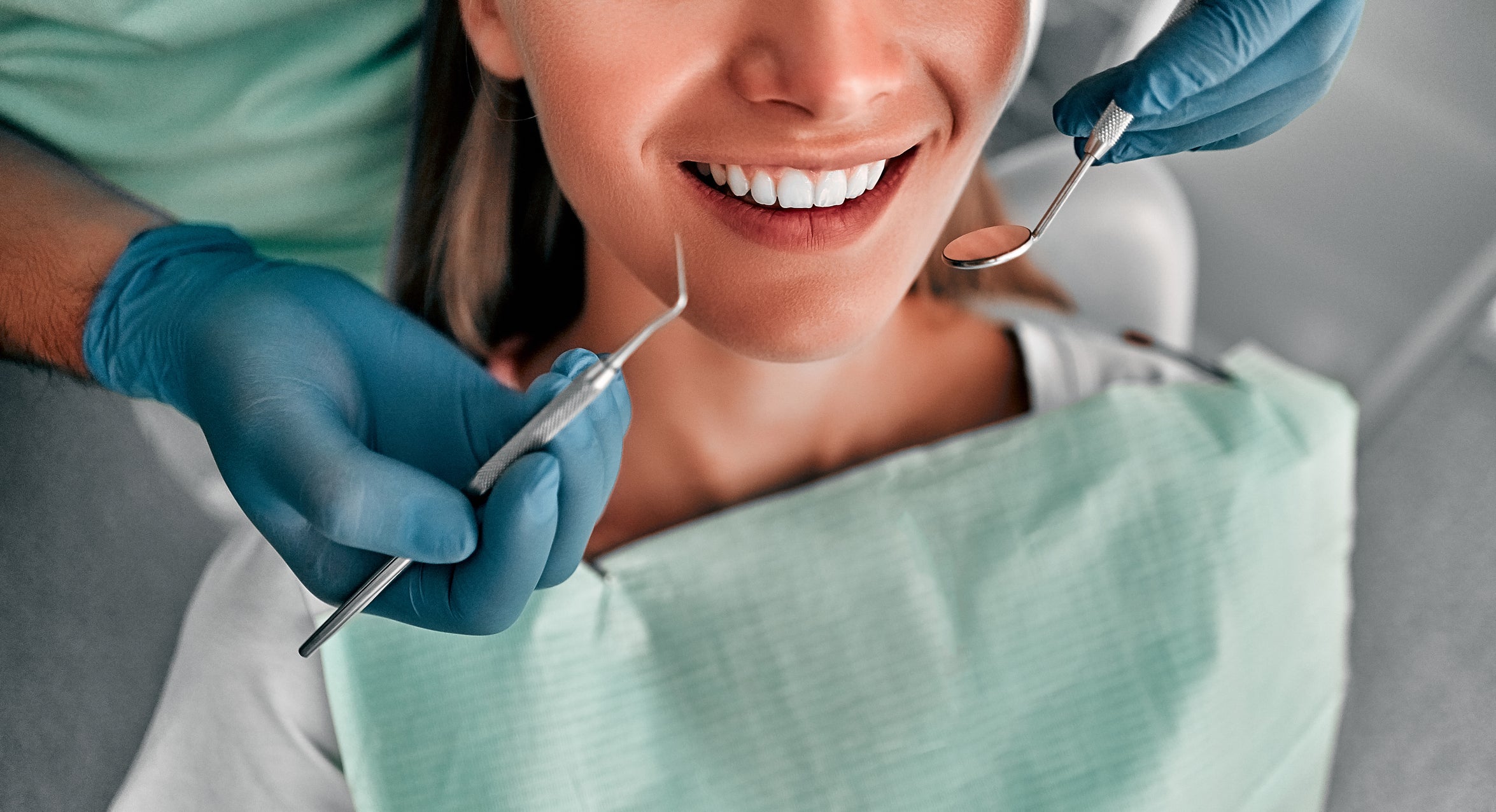
Many people avoid going to the dentist because they’re nervous about having work done. Some dental anxiety stems from a fear of pain or finding out something is wrong. Other people worry about racking up expenses or being rushed to make decisions. You might be prone to dental anxiety if you have had a negative experience like this in the past.
Ironically, neglecting your oral health makes you more likely to develop problems. For instance, gingivitis is easily treated and reversed if diagnosed early. However, if you never get your teeth cleaned, gingivitis can develop into periodontal disease, which can be painful and eventually causes tooth loss.
But knowing this doesn’t necessarily alleviate dental anxiety. What you need is a solution that makes you more at ease in the dentist’s chair. That’s where sedation dentistry comes in. Here’s what you need to know about making every dentist visit more comfortable.
What is Sedation Dentistry?
Sedation dentistry uses medication to help you relax while undergoing various dental procedures, from routine cleanings to root canals. Multiple levels of sedation are available to meet your needs:
- Mild sedation: You remain awake, but you feel sleepy and relaxed.
- Moderate sedation: You’re still able to communicate, but you may not remember much afterward.
- Deep sedation: The medication takes you to the edge of consciousness, but your dentist can wake you as needed.
- General anesthesia: You are completely unconscious during the procedure and unable to communicate.
What Sedation Methods are Used?
You may receive a sedative using one of these methods:
- Inhalation: Nitrous oxide, also known as laughing gas, is a mild to moderate sedative. Recovery is quick, so you can resume normal activities immediately.
- Oral: Taking a pill is another needle-free way to achieve mild to moderate sedation.
- Intramuscular (IM): Injecting medication into the muscle of your thigh or upper arm relaxes you quickly prior to your dental procedure.
- Intravenous (IV): Lengthy or in-depth procedures may call for general anesthesia using an IV.
Who is a Candidate for Sedation Dentistry?
This could be a great option for you if:
- You have dental anxiety.
- You have a low pain threshold.
- You have a strong gag reflex.
- You are undergoing a long procedure or deep cleaning.
- You need your wisdom teeth extracted.
- You’re getting dental implants or a root canal.
- Your child can’t sit still in the dentist’s chair.
How Do I Find a Sedation Dentist I Can Trust?
Park 56 Dental is IV-certified and licensed by the American Dental Association to perform sedation dentistry. This means we have received specialty training by the state Board of Dental Examiners to administer controlled medications that alter a patient’s consciousness to provide a comfortable, pain-free treatment.
If this sounds like the experience you want to have at the dentist, please contact us today at (212) 826-2322 to find out which type of sedation dentistry may be right for you.
RECENT POSTS
categories
- Uncategorized
- Cosmetic Dentistry
- Veneers
- Healthier Teeth
- Teeth Whitening
- Dental Health
- Video
- Dental Emergencies
- Invisalign
- Dental Implants
- Root Canal
- Sedation Dentistry
- Infographic
- Dental Crowns and Bridges
- Dental Anxiety
- Gum Disease
- COVID-19
- Bad Breath
- New York Dentist
- Cut out sugar
- General Dentistry
- Oral Health
- Oral Cancer
- Dry Mouth
- Gum Health
- Toothache
- Dental Sealants
- Cavities
